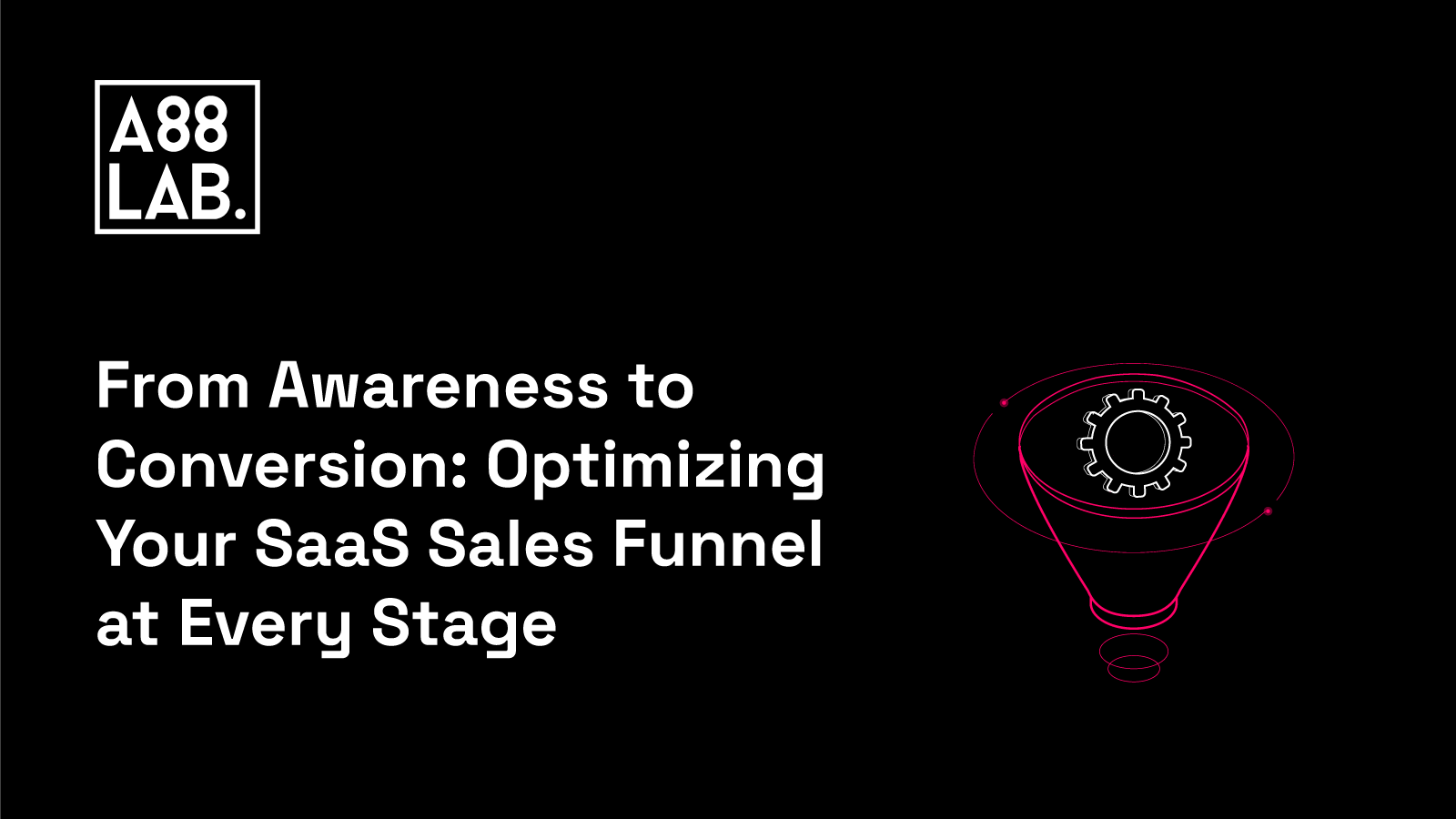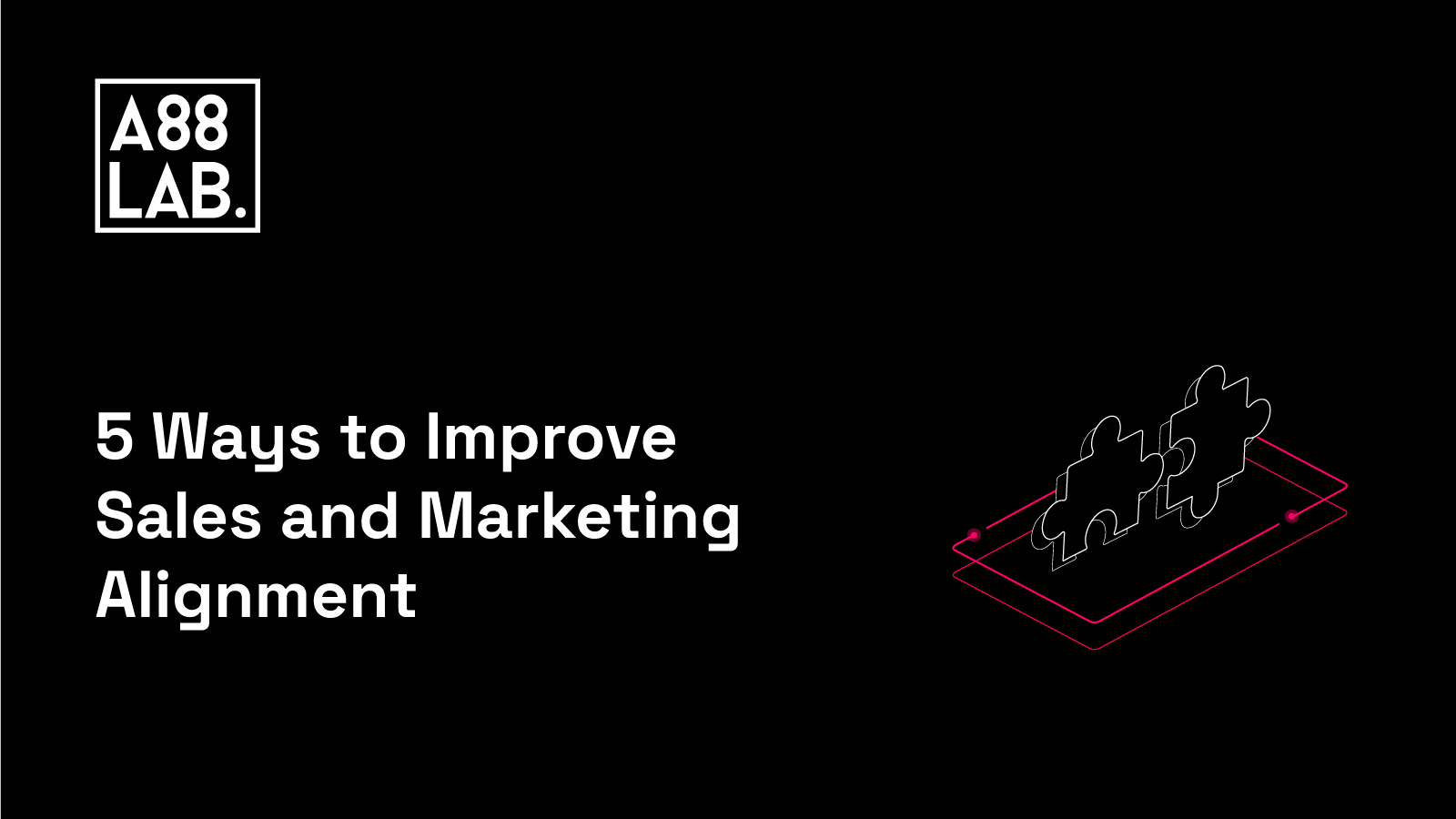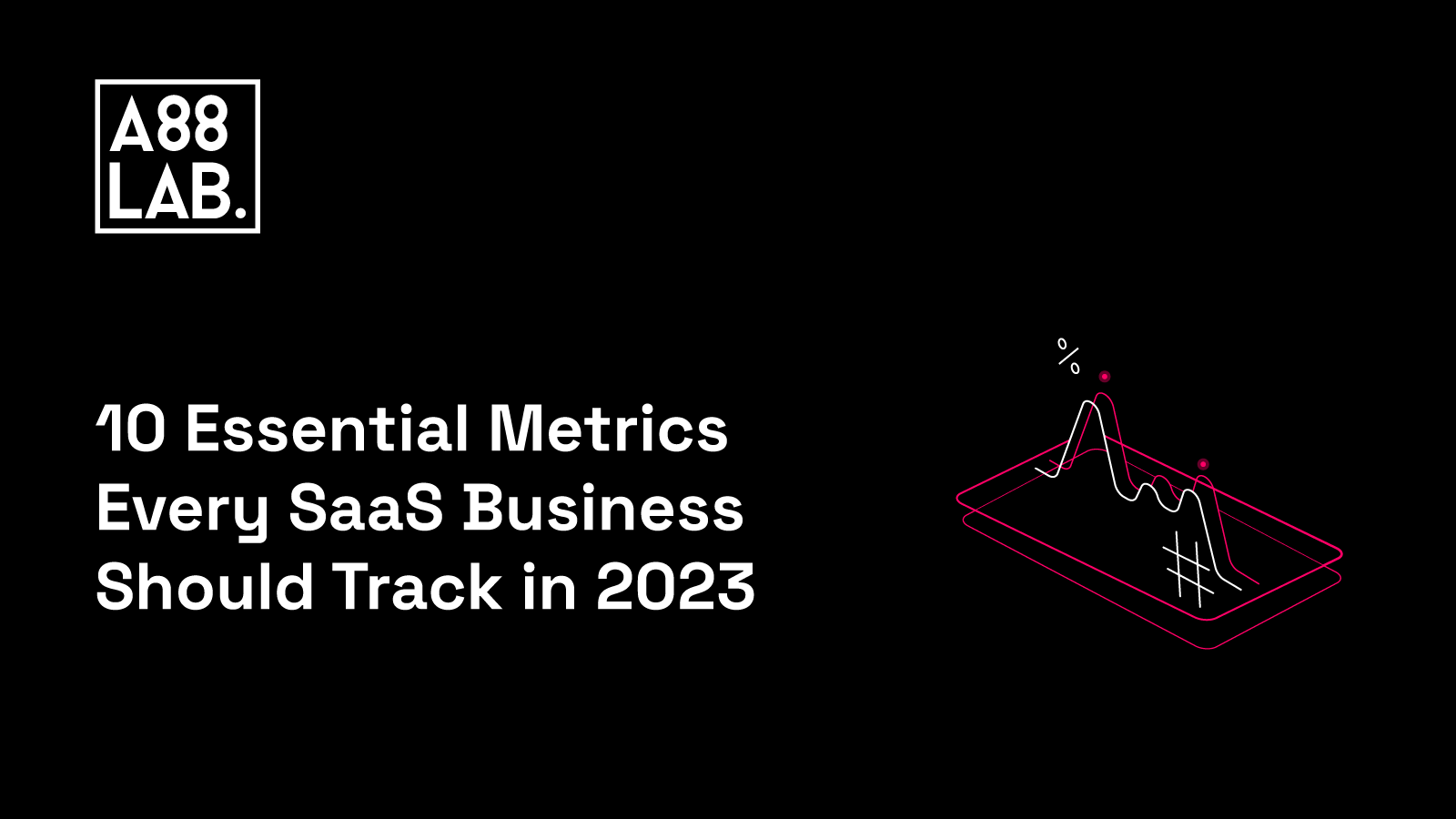For SaaS companies, your conversion funnel is not only a marker of your marketing and sales teams' success but a powerful mechanism that fuels the growth of your business. It serves as a pathway between introducing your prospects to your product and turning them into loyal customers.
At each stage of the funnel, there are dozens of opportunities to optimize your process and increase conversions. From the creative use of technology and testing strategies to marketing campaigns, optimizing each stage of the funnel can often be the difference between relative success and explosive growth.
But let's go back to the basics: What is a SaaS conversion funnel, exactly? What does it consist of, and how do you create one that works? In this article, we'll look at each stage of the SaaS sales funnel and describe the best practices for optimizing your process.
Let’s dive in and explore how to create a sales funnel that helps you find, convert, and keep more customers.
What Is a SaaS Sales Funnel?
You've probably heard the term "sales funnel" or "conversion rate" before, but maybe you weren't exactly sure what it meant. A SaaS sales funnel is the path customers take from first hearing about your product or service to actually buying it. It's a marketing and sales strategy that guides potential customers through the buying process, from initial awareness to final purchase. You can think of it as a series of steps designed to convert website visitors into paying customers.
A typical SaaS sales funnel consists of three main parts: the top, middle, and bottom. At the top of the funnel, prospects become aware of your brand. You capture their attention and get them interested in your product through content marketing, thought leadership, podcasts, webinars, search engine optimization, social media ads, and other marketing tactics. From there, prospects move through the middle of the funnel.
In the middle of the funnel, you'll work on clinching the sale by getting your visitors to commit to buying your product. This is often where you start getting into the nitty-gritty details of features and benefits, as well as customer reviews and case studies. You will provide more relevant information and address any potential concerns or objections the customer may have.
Finally, at the bottom of the funnel, you'll deliver your product and seal the deal. At this stage, your focus should be shifted to ensuring the customer is happy and gets the most out of their purchase. This could be done through onboarding, support resources, or product tutorials.
To make your SaaS sales funnel successful, you must keep your customers' needs in mind. This means creating a customer-centric funnel, designed to guide visitors through the buying process and make it easy for them to take action and explore your product. Unlike the product-centric sales funnel, which focuses on the product's features and benefits, a customer-centric approach focuses on the customer's pain points and how your product solves them.
To create an effective customer-centric sales funnel, you need to start by understanding your customers and the motivations that drive them. You'll need to ask questions such as: What are your customers' most significant pain points? What benefits or features do they need? What objections might they have? By understanding your targeted audience and their needs, you will be one step closer to mapping out a customer-centric SaaS sales funnel, tailored to each stage of the customer journey.
Why Is a Sales Funnel Important for SaaS Companies?
SaaS companies operate in a highly competitive market. Unlike traditional product-based businesses, SaaS companies rely on recurring revenue (MRR, ARR, etc.) from customers who pay a subscription fee to use their product or service. To maximize this revenue, companies need to create a customer journey that leads to conversions and retention, which plays a considerable role in the growth of the company. Some of the key metrics to measure customer retention and loyalty include CLV, Customer Churn, Net Promoter Score (NPS), etc., covered in our blog post “10 Essential Metrics Every SaaS Business Should Track in 2023”.
A well-planned sales funnel is essential for guiding prospects through the entire process from awareness to conversion, ultimately increasing the likelihood of customer retention.
After all, the real value of a sales funnel lies in its ability to guide prospects through the entire buying process and increase the likelihood of customer retention.
In the highly competitive SaaS market, a well-designed sales funnel can make all the difference in driving business growth. Without it, potential customers may become disengaged or lose interest, resulting in lost revenue. Therefore, the emphasis should not just be on having a sales funnel but on creating a high-quality one that optimizes every step of the customer journey.
Let's look at the three main reasons why having a well-optimized sales funnel is critical for SaaS companies:
Better Customer Understanding
Without a sales funnel, you may be targeting everyone, wasting money and effort on marketing tactics that don't actually lead to conversions. By mapping out a customer-centric sales funnel, you will better understand your customer's needs and preferences. This will allow you to tailor your messaging and create content and marketing campaigns that resonate with your audience and drive conversions. It will also help you improve the customer retention rate and loyalty, directly impacting the reoccurring revenue, which we will cover in the following chapters.
Improved Customer Acquisition Rates
A well-designed sales funnel should help you identify potential roadblocks and bottlenecks in the buying process, allowing you to optimize each stage for maximum conversions. Eliminating any unnecessary steps in your funnel and providing helpful resources will improve customer acquisition rates, shorten the buying process, and increase overall MRR and ARR.
Increased Customer Retention
While it may seem that the end goal of a sales funnel is to get someone to purchase a product, it is just as important to focus on customer retention. A well-designed funnel should not only convert customers but also keep them engaged and provide them with the resources they need to get the most out of your product. By mapping out post-purchase activities such as onboarding, customer support, and product tutorials into your funnel, you will increase customer retention and maximize revenue in the long term.
How to Optimize Your SaaS Sales Funnel
Now that you understand why creating a sales funnel is essential for B2B SaaS companies with complex sales processes, let's look at the steps to optimize your own.
The four stages of the SaaS sales funnel (awareness, consideration, decision, and action) will serve as the foundation for your customer journey. For each stage, you must identify the objectives and goals, create content that resonates with your target audience, and measure key performance indicators (KPIs) to track progress and success.
Sticky points and roadblocks will inevitably come up—it's important to identify and address them before they cause customers to drop off. If a customer balks at a certain point in the funnel, give this area a thorough review and consider how to simplify the process. Customers that move through the sales cycle quickly and without hassle indicate good structure and content in your sales funnel.
Providing valuable content is another essential thing that attracts potential customers and keeps them engaged throughout the SaaS sales funnel. Rather than using gated content that requires users to provide contact information, we recommend offering ungated content that provides value without asking for anything in return. With ungated content, prospects will easily move through the funnel, establish trust, educate themselves, and reach out to your sales team once they're ready to buy.
This way, you're improving the conversion rates down the funnel because the inbound leads booking a demo will be of higher quality. More about why you shouldn't gate your content is covered in our blog post "Ditch the Gate: How to Build Trust and Demand with Ungated Content".
Examples of content that work well in both sales enablement and demand generation strategies include ebooks, whitepapers, case studies, infographics, videos, podcasts, and webinars. Finally, remember to track key performance indicators (KPIs) at each funnel stage to optimize your content and improve conversion rates.
Now, let's take a look at how to optimize and adjust your sales strategies for each stage of the funnel.
Top of the Funnel, or TOFU
At the top of the funnel, SaaS companies should focus on creating and expanding demand for their product or service by building brand awareness and establishing trust with their target market. This is the stage where prospects are still in the research phase and are trying to find solutions to their problems. It's crucial to produce high-quality content that addresses these problems and showcases your expertise in the field.
Blogging, creating explainer videos or animations, and offering free how-to manuals are all effective ways to engage prospects and build interest in your brand. But it's not just about creating content; it's also about finding the proper channels to reach your audience, whether through social media platforms like LinkedIn, Twitter, or TikTok or guest appearances on relevant podcasts or webinars.
Remember, the goal at the top of the funnel is to establish trust and build relationships with your audience. By sharing your knowledge and expertise, you can position your brand as a thought leader in your industry and create a sense of authority and credibility that will carry through to the rest of the sales funnel.
Middle of the Funnel, or MOFU
The middle of the funnel is where SaaS companies can build on the interest they've generated in the TOFU area. At this stage, potential customers are looking for more detailed information on the solution to their problem. It's appropriate to introduce full presentations and app demos to provide maximum impact. Case studies can enhance the level of detail, but the focus should be on presenting the materials to reinforce credibility without overwhelming the customer.
Engagement is crucial in the middle of the funnel as SaaS companies aim to convert their target audience into customers. The brand has gained some traction within the audience, but it's still necessary to provide educational content that bridges its challenges with the solution offered by the platform or product. It's essential to demonstrate the unique value that the product brings to the table, especially if it involves a complex solution.
Building relationships with prospects is key to solving their pain points, so focusing on demand-capture programs is necessary to capture potential customers' interest and convert them into paying customers. At this stage, SaaS companies can also offer free trials, consultations, and demos to showcase the product's value and help potential customers make informed decisions.
Bottom of the Funnel, or BOFU
At the bottom of the funnel, it's all about closing the deal. The customer is almost ready to make a purchase, so making the process as easy as possible is essential. This means ensuring all the necessary details about pricing, features, and benefits are clear and concise. It's also crucial to leverage social proof, such as customer reviews and testimonials, to provide additional reassurance to the customer.
At this stage, it's critical to have a solid call to action (CTA) that leads the customer toward making the purchase. This may involve offering a limited-time discount or a special offer to encourage them to take action.
In addition to a strong CTA, it's also important to equip your sales team with the resources they need to close deals effectively. This may include sales collateral, demos, and other tools that showcase your product's unique value proposition. Your sales team should also be prepared to tailor their sales pitch to each prospect's specific needs and pain points, addressing any doubts or concerns they may have.
Ultimately, the goal of the bottom of the funnel is to convert interested prospects into paying customers, so make sure to provide all the necessary support and resources to facilitate a successful purchase.
Conclusion
Your SaaS sales funnel is critical to the success of your business. It's not just a matter of creating a landing page, adding a CTA button, and calling it a day. Instead, you need to carefully craft each stage of the funnel to align with the needs of your target audience.
By understanding your target market, you can create content and offers tailored to each step of the journey. From top-of-the-funnel awareness to bottom-of-the-funnel conversions, the SaaS sales funnel requires thoughtful consideration and strategic planning.
Finally, remember to stay focused on your goals and ensure your funnel aligns with them. Whether to increase revenue, acquire new customers, or retain existing ones, your funnel needs to be designed and optimized to help you reach those objectives.
.png)


